In the world of manufacturing and machining, achieving the highest levels of precision and efficiency is paramount. One machining process that stands out for its ability to achieve both is centerless grinding. Centerless grinding is a cnc machining technique that involves removing material from a workpiece through abrasive cutting. At the heart of this process lies the centerless grinding machine, a complex and intricate piece of equipment that has revolutionized the way we achieve high-precision cnc machining results in various industries. In this comprehensive article, we will take a deep dive into the world of centerless grinding machines, exploring their history, components, operation, advantages, applications, maintenance, and future trends.
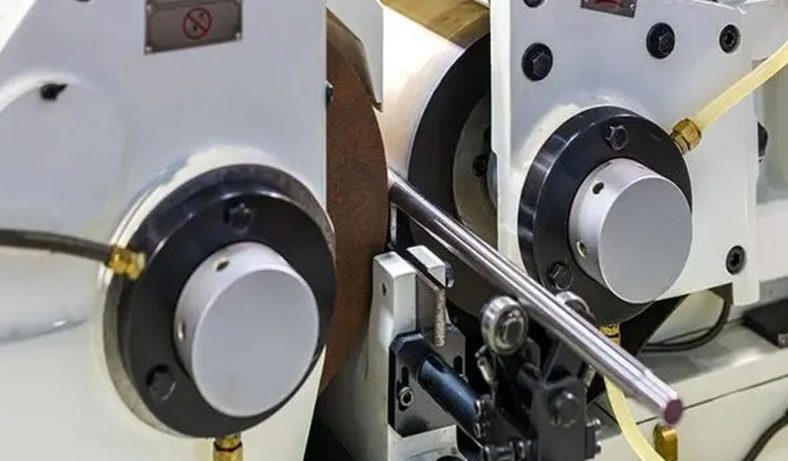
Introduction to Centerless Grinding Machines
Centerless grinding is a machining process that involves the removal of material from a workpiece through abrasive cutting. Unlike traditional cylindrical grinding methods, where the workpiece is held between centers, centerless grinding employs a unique approach that eliminates the need for center support. This innovative method revolves around the interaction between three key components: the grinding wheel, the regulating wheel, and the workrest blade.
Historical Evolution of Centerless Grinding Machines
The history of centerless grinding machines dates back to the 19th century, marked by gradual developments and refinements that led to the sophisticated machines we have today.
Early Innovations
The initial concepts of abrasive cutting and grinding emerged in the 19th century with the development of grinding wheels made of natural abrasives. However, the true evolution of centerless grinding began in the early 20th century. In 1907, German engineer Fritz Studer developed a precision cylindrical grinding machine with a centerless workholding system. This innovative approach eliminated the need for centers and allowed for continuous grinding of cylindrical components.
Twentieth-Century Advancements
Throughout the 20th century, several engineers and companies contributed to the advancement of centerless grinding technology. Notably, in the 1920s, Mikrosa, a German company, introduced the first centerless grinding machine with a regulating wheel and supporting workrest blade. This design marked a significant milestone in achieving higher precision and productivity in the grinding process.
Post-War Innovations
After World War II, further advancements in technology propelled centerless grinding into wider industrial applications. Developments in materials, abrasives, and machine designs improved the accuracy, efficiency, and versatility of centerless grinding machines. The introduction of electric servomotors and CNC (Computer Numerical Control) technology in the latter half of the 20th century further enhanced the capabilities of centerless grinding machines, enabling tighter tolerances and more complex geometries.
Contemporary Centerless Grinding Machines
Today, centerless grinding machines are sophisticated pieces of equipment that combine precision engineering, advanced materials, and automation. These machines have found their place in various industries, from automotive and aerospace to medical device manufacturing and consumer goods.
Centerless grinding machines have a rich history that spans over a century of innovation and refinement. From early experiments with abrasive cutting to the modern CNC-driven machines of today, centerless grinding has evolved into a reliable and precise machining process with a wide range of applications. As we continue to explore the advantages, applications, maintenance, and future trends of centerless grinding machines, it’s important to appreciate the historical journey that has brought us to this point of technological excellence.
Components of a Centerless Grinding Machine
A centerless grinding machine comprises a set of critical components that collaborate harmoniously to facilitate the intricate process of material removal and precision machining. Understanding these components is essential for comprehending the functioning and capabilities of centerless grinding machines.
Grinding Wheel
The grinding wheel, often referred to as the cutting wheel, is the primary tool responsible for material removal in centerless grinding. This wheel consists of abrasive grains that are bonded together to form a rotating disc. The choice of abrasive grains and bonding material dictates the wheel’s cutting efficiency and characteristics. The grinding wheel rotates rapidly and contacts the workpiece, generating the abrasive action that removes material from the workpiece’s surface. The nature of the abrasive grains determines the grinding wheel’s effectiveness on various materials and workpiece geometries.
Regulating Wheel
The regulating wheel is an integral component in centerless grinding machines, serving to control the rotational speed and feed rate of the workpiece. Positioned parallel to the grinding wheel, the regulating wheel operates at a slightly lower rotational speed. It has a dual role: ensuring consistent workpiece rotation and exerting pressure on the workpiece to facilitate the grinding process. The regulating wheel’s speed, combined with its controlled feed rate, influences the material removal rate and the precision of the final workpiece dimensions.
Workrest Blade
The workrest blade, also known as the work support blade, is positioned between the grinding wheel and the regulating wheel. Its primary function is to provide support and stability to the workpiece during the grinding process. By preventing deflection and vibration of the workpiece, the workrest blade ensures accurate and consistent results. The blade can be adjusted to accommodate various workpiece diameters, and its design plays a crucial role in maintaining workpiece alignment and stability.
Supporting Structures
The supporting structures of a centerless grinding machine encompass the machine’s base, spindle, and associated components that provide the foundation for the entire grinding process. Rigidity, stability, and precision are of paramount importance in these structures, as they directly impact the accuracy and quality of the final machined components. The machine’s design and construction must minimize vibrations and deflections, enabling the grinding wheels and other components to operate with minimal deviation from the desired parameters.
These supporting structures include the machine’s frame, which houses the various moving parts and guides the grinding wheels’ movements. The spindle, often equipped with a motor, drives the grinding wheel’s rotation, while the regulating wheel is powered by a separate drive system. Bearings and other mechanisms facilitate smooth movements and interactions between the components, ensuring consistent and precise machining.
The components of a centerless grinding machine work in concert to enable the accurate and efficient machining of workpieces. The grinding wheel, regulating wheel, workrest blade, and supporting structures each play a distinct role in the overall process. Understanding their functions and interactions is essential for optimizing centerless grinding operations and achieving superior machining results.
Types of Centerless Grinding Machines
Centerless grinding machines are available in various configurations, each designed to suit specific workpiece geometries and production requirements. The three main types of centerless grinding machines are through-feed centerless grinding, in-feed centerless grinding, and end-feed centerless grinding.
1. Through-feed Centerless Grinding
Through-feed centerless grinding is one of the most common and efficient types of centerless grinding processes. In this method, the workpiece is fed continuously between the grinding wheel and the regulating wheel. The workpiece travels axially through the grinding zone as the wheels remove material. Through-feed grinding is ideal for high-volume production of cylindrical components that have consistent diameters and lengths. This method offers fast cycle times and is well-suited for producing components like pins, bolts, and shafts.
Key Characteristics:
- Continuous feeding of workpieces.
- Suitable for long, cylindrical workpieces with consistent diameters.
- High production rates and efficiency.
- Minimal manual intervention once set up.
2. In-feed Centerless Grinding
In-feed centerless grinding is used for machining complex shapes and components with tighter tolerances. Unlike through-feed grinding, where the workpiece continuously passes through the grinding zone, in-feed grinding involves the incremental removal of material as the regulating wheel advances toward the grinding wheel. This method is suitable for parts with varying diameters and lengths that require precise positioning and sizing.
Key Characteristics:
- Material removal occurs as the regulating wheel advances incrementally.
- Ideal for parts with complex shapes and tight tolerances.
- Greater control over dimensional accuracy.
- Suited for both short and long workpieces.
3. End-feed Centerless Grinding
End-feed centerless grinding is a combination of the through-feed and in-feed methods. In this approach, the workpiece is placed between the grinding wheel and the regulating wheel, and the grinding wheel is fed in a prescribed amount to achieve the desired part size. This method is commonly used for achieving close tolerances and high surface finish on workpieces.
Key Characteristics:
- Workpiece is positioned between the grinding and regulating wheels.
- Grinding wheel feeds into the workpiece to achieve the desired diameter.
- Well-suited for achieving high precision and surface finish.
- Suitable for components with step-like or tapered features.
Each type of centerless grinding has its unique advantages and is chosen based on the specific requirements of the workpiece and the desired outcome. Through-feed grinding is preferred for high-volume production of consistent parts, in-feed grinding excels in producing complex shapes with tight tolerances, and end-feed grinding is employed for achieving precision and surface finish on various workpiece geometries. The selection of the appropriate type of centerless grinding machine depends on factors such as the workpiece material, dimensions, tolerances, and production volume.
How Does A Centerless Grinding Machine Work?
The operation of centerless grinding machines involves a series of steps that ensure precise material removal and the attainment of accurate dimensions. This section outlines the key stages of operating a centerless grinding machine, from setup and configuration to the actual grinding process and the benefits of employing this method.
Setup and Configuration
- Machine Setup: Begin by ensuring the centerless grinding machine is properly installed and secured. Verify that the machine is level and stable to prevent vibrations that could affect the machining accuracy.
- Wheel Alignment: Align the grinding wheel and the regulating wheel to ensure they are parallel and properly positioned. The alignment is crucial for achieving consistent results.
- Workrest Blade Adjustment: Adjust the workrest blade to accommodate the workpiece size and provide proper support. Ensure the blade is set at the correct angle to prevent workpiece deflection.
- Wheel Dressing: Dress both the grinding wheel and the regulating wheel to maintain their profiles and cutting efficiency. Proper wheel dressing ensures the wheels interact optimally with the workpiece.
Grinding Process Steps
- Workpiece Loading: Place the workpiece on the workrest blade. Depending on the type of centerless grinding (through-feed, in-feed, or end-feed), position the workpiece accordingly.
- Machine Start-Up: Start the grinding wheel and the regulating wheel. They rotate in opposite directions.
- Material Removal: As the workpiece travels through the grinding zone, the grinding wheel removes material through abrasive cutting. The regulating wheel controls the workpiece’s rotational speed and feed rate.
- Dimensional Control: The regulating wheel’s speed and feed rate play a crucial role in controlling the workpiece’s axial movement. This movement, combined with the grinding wheel’s cutting action, determines the material removal rate and the final dimensions of the workpiece.
- Sizing and Finishing: The workpiece passes through the grinding and regulating wheels multiple times to achieve the desired size and surface finish. This iterative process ensures consistent dimensions and a smooth surface.
Benefits of Centerless Grinding
Centerless grinding offers several advantages that make it a preferred machining method in various industries:
- High Production Rates: Centerless grinding machines excel in high-volume production scenarios. The continuous feeding of workpieces and the elimination of time-consuming setups contribute to rapid material removal and production.
- Consistent Precision: The design of centerless grinding machines reduces the potential for human error, resulting in consistent part dimensions. This makes centerless grinding ideal for achieving tight tolerances and high-quality finishes.
- Reduced Setup Time: Once the machine is properly set up, minimal adjustments are needed between workpieces. This feature significantly reduces downtime associated with tool changes and setup modifications.
- Versatility: Centerless grinding can be applied to a wide range of materials, including metals, plastics, ceramics, and composites. It accommodates various workpiece geometries, making it suitable for diverse machining applications.
- Minimal Workpiece Distortion: Because the workpiece is not clamped between centers, there is less risk of distortion due to heat generated during the grinding process. This is especially important for delicate or heat-sensitive materials.
- Cost-Effective: The efficiency of centerless grinding contributes to reduced manufacturing costs per part. The high material removal rates and reduced labor requirements make centerless grinding an economical choice for mass production.
The operation of centerless grinding machines involves careful setup and configuration followed by a systematic grinding process. The benefits of centerless grinding, including high production rates, consistent precision, reduced setup time, versatility, and cost-effectiveness, have cemented its position as a valuable machining technique across various industries.
Advantages of Centerless Grinding Machines
Centerless grinding machines offer a host of advantages that make them a preferred choice for machining various components across diverse industries. This section delves into the key advantages of centerless grinding machines, highlighting their impact on production rates, precision, and setup efficiency.
1. High Production Rates
Centerless grinding machines are renowned for their exceptional material removal rates, making them particularly well-suited for high-volume production scenarios. The continuous feeding of workpieces in through-feed centerless grinding ensures a steady flow of components through the grinding zone, enabling rapid and efficient material removal. This feature is advantageous in industries where mass production is essential, such as automotive manufacturing, where hundreds or even thousands of identical parts need to be machined in a short timeframe.
The high production rates achieved through centerless grinding contribute to overall manufacturing efficiency, reduced cycle times, and higher output per unit of time.
2. Consistent Precision
Precision is a cornerstone of centerless grinding, and these machines excel in delivering accurate and consistent results. The design of centerless grinding eliminates many sources of error that can arise in other machining methods. Since the workpiece is not clamped between centers, there is less opportunity for deflection or distortion due to clamping forces. This results in superior dimensional accuracy and surface finish.
The interaction between the grinding wheel, regulating wheel, and workrest blade ensures uniform material removal and precise control over part dimensions. The consistent precision achieved through centerless grinding is crucial in industries where tight tolerances are non-negotiable, such as aerospace, medical device manufacturing, and precision engineering.
3. Reduced Setup Time
One of the significant advantages of centerless grinding machines is the reduced setup time between workpieces. Once the machine is correctly configured for a specific part, subsequent parts can be processed with minimal adjustments. Unlike traditional grinding methods that often require time-consuming changes to fixtures and tooling, centerless grinding minimizes downtime associated with setup modifications.
The reduced setup time is particularly beneficial in job shops or manufacturing environments where frequent changeovers between different components are necessary. This efficiency leads to increased machine utilization, improved productivity, and ultimately, cost savings.
4. Versatility
Centerless grinding machines offer versatility in terms of the types of components they can process. These machines can handle a wide range of materials, including metals, plastics, ceramics, and composites. Moreover, centerless grinding accommodates various workpiece geometries, from simple cylindrical shapes to more complex profiles.
The ability to process different materials and geometries makes centerless grinding a versatile solution for industries as diverse as automotive, aerospace, medical devices, consumer goods, and more.
5. Minimized Workpiece Distortion
Due to the absence of clamping forces associated with center-based grinding methods, centerless grinding minimizes the risk of workpiece distortion or deformation. This is particularly crucial when working with delicate or heat-sensitive materials, where even slight deformations can compromise part integrity and functionality.
The advantages of centerless grinding machines are evident across multiple fronts. The combination of high production rates, consistent precision, reduced setup time, versatility, and minimized workpiece distortion positions centerless grinding as a superior machining technique for meeting the demands of modern manufacturing.
Applications of Centerless Grinding
Centerless grinding machines find extensive application in a wide range of industries, offering precision machining solutions for various types of components. This section explores the specific applications of centerless grinding in the automotive industry, aerospace industry, medical device manufacturing, and consumer goods sector.
1. Automotive Industry
The automotive industry relies heavily on centerless grinding to produce various components used in vehicles. From engine parts to transmission components and axles, centerless grinding machines play a vital role in manufacturing these critical automotive components. The high production rates and consistent precision of centerless grinding make it well-suited for producing parts in large quantities, such as crankshafts, camshafts, and pistons. Additionally, centerless grinding is used to achieve tight tolerances and high surface finish on components like ball bearings, valves, and fuel injector needles, ensuring the optimal performance and durability of automotive systems.
2. Aerospace Industry
In the aerospace industry, where safety and precision are paramount, centerless grinding is employed to create components for aircraft and spacecraft. Centerless grinding machines produce critical parts like turbine blades, engine shafts, and landing gear components. The ability to achieve fine tolerances and impeccable surface finishes is essential in aerospace applications to ensure the reliable and efficient operation of aircraft and spacecraft systems. The versatility of centerless grinding allows manufacturers to process various aerospace materials, including titanium, stainless steel, and nickel-based alloys.
3. Medical Device Manufacturing
Centerless grinding is a key technology in the medical device manufacturing industry, enabling the production of precision components used in medical equipment and implants. From surgical instruments and dental tools to orthopedic implants and catheter guidewires, centerless grinding machines deliver the required precision, surface finish, and dimensional accuracy. The non-contact nature of centerless grinding minimizes the risk of workpiece contamination, making it ideal for producing medical devices that demand high hygiene standards.
4. Consumer Goods
Centerless grinding has applications in the consumer goods sector, contributing to the production of various everyday items. For instance, centerless grinding machines are used to manufacture parts for household appliances, such as blenders, mixers, and power tools. Additionally, centerless grinding is employed to produce components for items like faucets, door handles, and writing instruments. The versatility of centerless grinding allows manufacturers in the consumer goods industry to efficiently produce high-quality components that meet aesthetic and functional requirements.
5. Other Industries
Beyond the highlighted sectors, centerless grinding finds use in many other industries. It’s employed to manufacture components for the textile machinery industry, where precision parts are crucial for smooth operation. Centerless grinding also plays a role in the production of bearings, bushings, and rollers for industrial machinery. Moreover, the entertainment industry relies on centerless grinding for producing components used in musical instruments, ensuring accurate sound production and quality.
Centerless grinding machines have diverse applications across industries that demand precision, reliability, and efficient production. From automotive and aerospace to medical devices and consumer goods, centerless grinding contributes to the manufacturing of critical components that shape modern technology and everyday life.
Choosing the Right Centerless Grinding Machine
Selecting the appropriate centerless grinding machine is a critical decision that can significantly impact the quality, efficiency, and cost-effectiveness of your machining operations. This section outlines key factors to consider when choosing the right centerless grinding machine for your specific needs.
1. Machine Specifications
- Workpiece Size and Material:Determine the range of workpiece diameters and lengths you intend to process. Additionally, consider the type of material you will be working with, as different materials have varying hardness and grinding characteristics.
- Grinding Wheel and Regulating Wheel Specifications:Evaluate the specifications of the grinding wheel and regulating wheel. Factors such as wheel diameter, width, abrasive material, and grit size play a role in the grinding process’s effectiveness and the achievable surface finish.
- Machine Power and Performance:Consider the power and performance capabilities of the machine. Higher horsepower can lead to faster material removal rates, but it’s essential to strike a balance between power and precision to achieve optimal results.
2. Automation and Integration
- CNC Control:Modern centerless grinding machines often feature CNC (Computer Numerical Control) systems that enhance precision and productivity. Evaluate the CNC capabilities and features, such as automatic tool change, in-process gauging, and adaptive control, that can streamline operations and improve consistency.
- Automation Options:Consider whether the machine offers automation options, such as robotic loading and unloading, which can improve efficiency and reduce labor costs. Automation can also minimize the risk of human error and enhance overall throughput.
3. Machine Rigidity and Stability
Examine the machine’s structural design and rigidity. A robust and stable machine structure is essential to minimize vibrations and ensure accurate machining.
4. Maintenance and Support
- Manufacturer Reputation:Research the reputation of the manufacturer. Choose a reputable manufacturer with a track record of producing reliable, high-quality machines. This ensures that you receive a machine built to industry standards.
- Service and Support:Consider the availability of technical support, spare parts, and maintenance services. A manufacturer with a strong support network can provide timely assistance and minimize downtime in case of issues.
5. Cost Considerations
- Initial Investment:While cost is a significant factor, it’s essential to balance the initial investment with the machine’s capabilities and long-term benefits. Choosing a machine solely based on a lower price may lead to compromises in terms of precision and performance.
- Return on Investment (ROI):Evaluate the potential ROI the machine can offer. A more advanced and efficient machine might have a higher upfront cost but could lead to greater savings through increased productivity, reduced scrap, and improved quality.
6. Application Requirements
- Type of Grinding:Identify the primary type of grinding your applications require (through-feed, in-feed, or end-feed) and ensure the selected machine is optimized for that specific method.
- Part Complexity:Consider the complexity of the parts you’ll be machining. More intricate parts may require additional features or capabilities to achieve the desired results.
- Tolerances and Surface Finish:Understand the tolerances and surface finish requirements of your parts. Choose a machine that can consistently achieve the level of precision and finish you need.
- 7. Future Scalability:Consider your company’s growth potential and whether the chosen machine can accommodate increased production demands and evolving requirements.
- 8. User-Friendly Interface:An intuitive and user-friendly interface can significantly improve the machine’s ease of use and reduce the learning curve for operators.
Choosing the right centerless grinding machine requires a thorough understanding of your specific requirements, as well as a careful evaluation of machine specifications, automation options, machine rigidity, maintenance and support, cost considerations, application requirements, scalability, and user interface. By meticulously considering these factors, you can make an informed decision that aligns with your machining goals and ensures optimal results.
Learn more about equipment articles
-
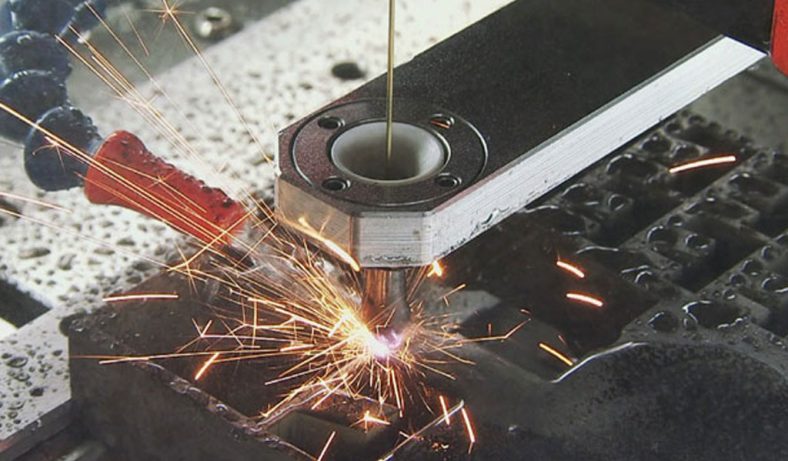
Research On Improving Surface Quality Of EDM
-
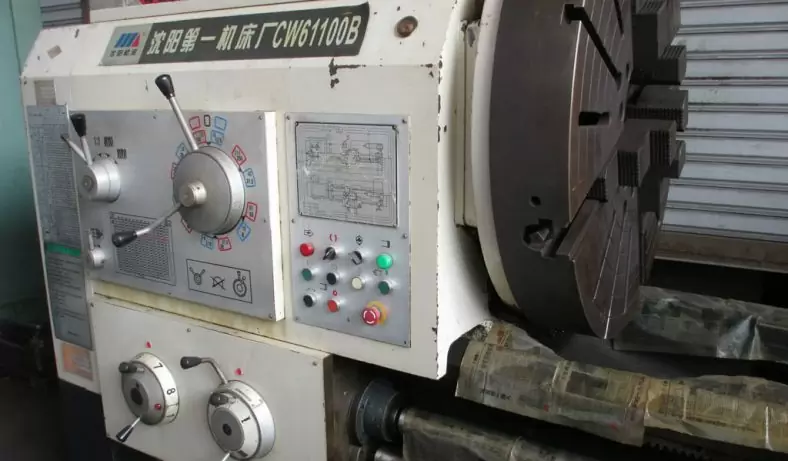
Shenyang Machine Tool Adjustment And Maintenance
-
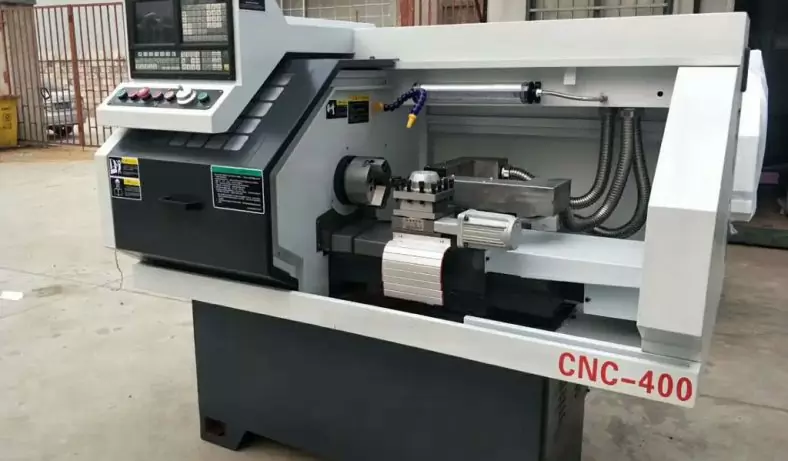
Daily Maintenance And Maintenance Of Machining Center
-
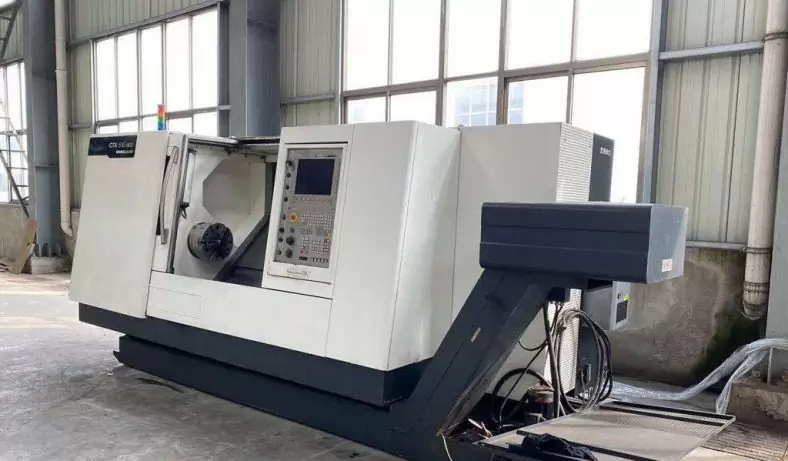
Example Of Automatic Tool Change Of CNC Machine Tool Manipulator
-
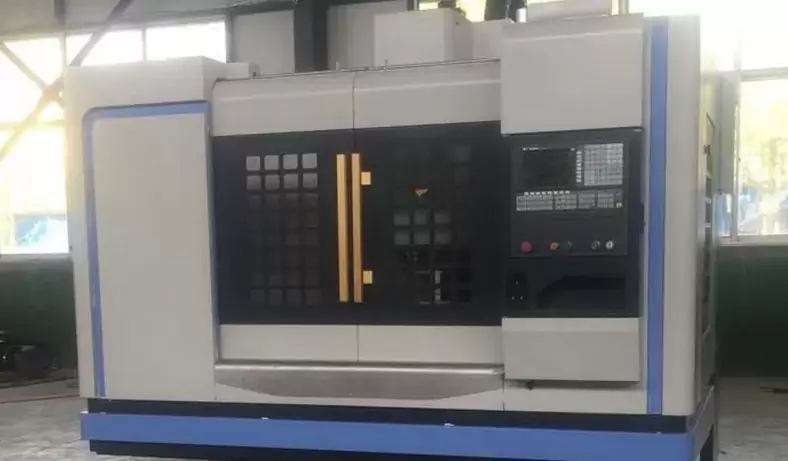
CNC Machine Tools Emergence And Development In Shenyang Machine Tool Factory
-

Fatigue Strength Of CNC Machine Tools
